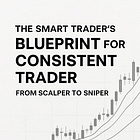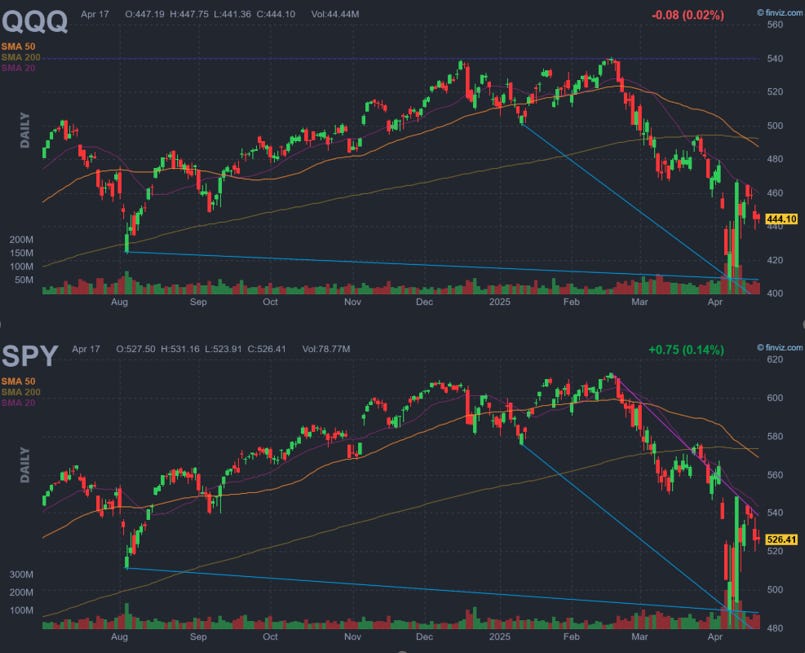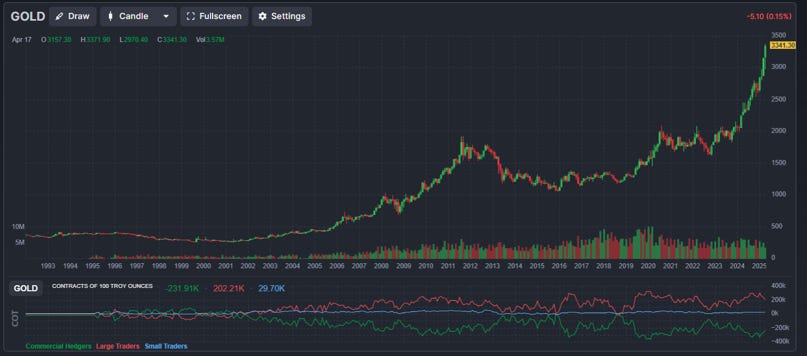Since the early days of President Donald Trump’s first term — and now again as we enter the opening chapters of his second campaign — tariffs have once again taken center stage in his economic playbook. What was initially pitched as a negotiation tool to secure “better deals for America” has morphed into a full-blown policy direction, with global consequences.
And this time, the markets are watching more nervously than ever.
Tariffs as Tactics — Or Weapons?
During his first presidency (2017–2021), Trump introduced a sweeping wave of tariffs targeting trading partners across the globe. While many assumed these were short-term levers — meant to bring China, Europe, and others to the table — what followed was a cycle of unpredictable announcements, rollbacks, and escalations that introduced significant volatility into global supply chains.
From 2018 to 2020, we witnessed the U.S. imposing tariffs on more than $350 billion worth of Chinese goods, prompting retaliatory actions and unsettling equity markets. What was meant to be strategic often felt impulsive, as tariff levels were adjusted with little forewarning, shaking investor confidence and straining relationships with key allies, including Canada, Germany, and even neighboring Mexico.
Broken Communication, Broken Trust
I think there are two distinct but equally concerning dynamics at play. First, we’re straining relationships with long-standing allies like Canada, China, European nations, and Mexico by imposing unrealistic tariff demands — actions that risk not only diplomatic fallout but also real economic pain for American consumers. Second, we’re targeting smaller, economically vulnerable nations such as Pakistan, Bangladesh, Jamaica, and Madagascar — countries that heavily rely on U.S. trade to stabilize their budgets and economies.
This not only reveals how fractured the administration’s communication strategy has become — it also underscores how non-strategic and poorly thought-out the entire tariff policy truly is. Rather than crafting a targeted, high-leverage tariff approach that could actually benefit American consumers, the decision to broadly penalize smaller nations reflects a lack of precision, planning, and seriousness. It’s increasingly clear that this was never a tactical negotiation lever — it was reactive policymaking disguised as strategy.
Blame-Shifting Over Strategy
Amid rising inflation, surging credit spreads, and widening economic uncertainty, President Trump has adopted a familiar posture — looking for someone to blame.
Recently, he’s pointed fingers at Federal Reserve Chair Jerome Powell, accusing him of failing to cut interest rates fast enough. But this overlooks the core issue: the administration’s own erratic policy execution and poor communication. What we’re seeing is not the result of inaction from others — it’s the fallout from deeply flawed strategy.
This is a White House that inherited one of the strongest U.S. economies in modern history — robust employment, steady growth, low inflation, and a booming stock market. And yet, under its watch, we’ve now seen a 19%+ market drop, breakdowns in international alliances, and the return of recessionary fears. All of it self-inflicted.
Market Mayhem and the Wall Street Wake-Up Call
Initially, markets responded with cautious optimism, treating Trump’s renewed tariff rhetoric as political posturing rather than concrete policy.
The S&P 500 (ES) and Nasdaq (NQ) each dropped over 20% in recent trading days. The VIX spiked past 50, and UVXY briefly touched 52, signaling intense fear. Treasury yields widened as global buyers — including those in Europe and Asia who hold over 33% of U.S. treasuries — began to question the stability of the dollar-centric order.
At one point, fears echoed comparisons to the 1987 crash, not due to economic data, but due to policy instability.
Can Tariffs Really Bring Back Jobs?
The administration argues that tariffs are necessary to “bring back American jobs.” But the economic reality is more complicated:
Supply chains cannot be rebuilt overnight. Infrastructure, skilled labor, and logistical networks need years — not weeks — to form.
Americans have shifted toward service-based careers, leaving a gap in manufacturing talent that tariffs alone won’t fill.
U.S. strength lies in services and innovation — Netflix, Apple, Tesla, Amazon Web Services — not low-cost manufacturing. The very sectors thriving globally may be unintentionally hurt by retaliatory tariffs.
Instead of revitalizing industry, these actions risk isolating the U.S. at a moment when global cooperation is essential to stabilize inflation, secure supply chains, and lead emerging tech transitions.
The Path Forward — Before It’s Too Late
If there’s one takeaway from this moment, it’s that trust and predictability are more valuable than ever.
President Trump has a unique opportunity: to reposition the U.S. as a fair but firm negotiator. But it will require re-engaging with allies like Japan, Germany, and Canada, and avoiding unnecessary escalations with long-standing partners like China and India.
Time is short.
The longer this tariff conflict drags on, the greater the risk that nations pivot away from U.S. alliances — and even worse, begin building alternative economic frameworks, away from the dollar. That could shake not just markets, but America’s position as the anchor of the global financial system.
A Signal from Gold?
If there’s ever been a barometer for trust in policy and currency stability, it’s gold. The recent price action in gold — now trading above $3,300 and climbing rapidly — reflects more than just inflation hedging. It suggests something deeper: a growing global anxiety about U.S. leadership, fiscal discipline, and long-term economic resilience.
Historically, gold spikes when trust in fiat systems wavers. And today’s surge feels eerily similar to moments of global crisis. When traditional safe havens like bonds come under pressure and the dollar's dominance is questioned, gold becomes the asset of last resort.
This isn't just about hedging portfolios — it’s about hedging against policy chaos.
Final Thought: Tariffs Alone Aren’t the Solution
In any negotiation, leverage matters — but trust is what sustains lasting outcomes. Markets can absorb shocks. They can even price in tough policies. What they can’t absorb is chaos.
What we need isn’t just stronger deals. We need a clearer vision. We need diplomacy, consistency, and communication that doesn’t shift with every headline.
America doesn’t lead by isolating. It leads by showing the world how stability, strength, and strategy come together.
I'd love to hear your thoughts —
Do you believe tariffs are helping the U.S. economy right now, or hurting our global credibility?
Drop a comment and let’s talk.
Shawn
Disclosure
The information provided in this article is for educational purposes only and should not be considered as financial advice. Trading and investing in financial markets involve substantial risk, and it is important to conduct your own research and consult with a qualified financial professional before making any investment decisions. The author is not responsible for any financial losses or gains that may result from actions
Trading futures, stocks, and options involves significant risk and is not suitable for all investors. This content is for educational purposes only and does not constitute financial advice.






